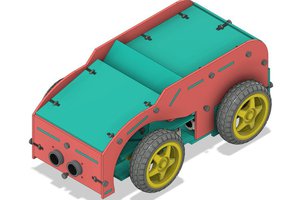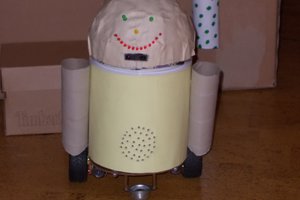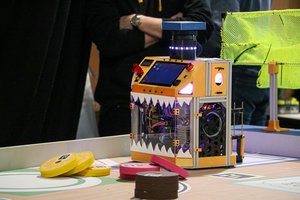Overview
A self balancing robot with arduino is a type of autonomous robot that is designed to maintain its balance on two wheels or other balancing mechanisms. These robots are able to stand upright and move without falling over, even when subjected to external disturbances. The concept behind a self-balancing robot is often inspired by the way humans and animals maintain their balance.
FOR FULL PROJECT GO TO THE LINK BELOW
https://electronicsworkshops.com/2023/08/26/self-balancing-robot-with-arduino/
Introduction
A self-balancing robot built with Arduino is a captivating project that combines mechanical engineering, electronics, and programming skills. By integrating sensors and motors with an Arduino board, this project aims to create a robot that can maintain its balance on two wheels. The robot uses real-time data from accelerometers and gyroscopes to continuously adjust its motor speeds, preventing it from toppling over even when subjected to external disturbances. This project offers an excellent opportunity to delve into control algorithms like PID (Proportional-Integral-Derivative) and learn about feedback loops. Assembling, programming, and fine-tuning the robot’s behavior provide valuable hands-on experience in robotics and automation, making it an educational and rewarding endeavor for both beginners and experienced enthusiasts alike.
Bill Of Materials
| SN | COMPONENTS NAME | DESCRIPTION | QUANTITY | |
|---|---|---|---|---|
| 1 | Arduino Board | Arduino nano | 1 | https://amzn.to/3Qe71y5 |
| 2 | Connecting wires | jumper wire | some | https://amzn.to/3fMoSw7 |
| 3 | Breadboard | Normal | 1 | https://amzn.to/3FUQlXe |
| 4 | Motor Driver | HC05 | 1 | https://amzn.to/3Lss0dp |
| 5 | Car Chassis Kit | DIY Robot | 1 | https://amzn.to/3Z6j0A3 |
| 6 | Accelerometer Gyroscope Sensor | MPU-6050 | 1 | https://amzn.to/44udBUp |
Principle of self balancing robot
Self-balancing robot is a robot that balances itself on two wheels, constantly adjusting its position. A gyroscope sensor is used in self-balancing robots, which continuously send the robot’s orientation data to the controller. Based on this data controller commands the motor to run forward or backward to keep the robot’s position upright.

This is the ideal position of the self-balancing robot, with its body perfectly oriented towards the wheel. There is no angle between the Y axis and the robot body.

When the body leans forward, there will be a certain angle between the Y axis and the body. This angle is detected by the gyro sensor MPU6050, then this data is sent to the Arduino. The Arduino now performs the PID calculation and commands the stepper motor to run forward to minimize the tilt angle to 0 degrees.

The same happens if when the robot leans backwards, the motor will reverse and adjust the tilt angle to 0. The robot continues to rotate the motor back and forth more than 400 times per second, which gives us the impression that the robot is stable in its place.
Key Achievements
Balance Control: The core accomplishment of the project is the successful implementation of a balance control algorithm. The robot utilizes sensor data, such as accelerometer and gyroscope readings, to calculate its tilt angle and adjust the motor speeds accordingly to maintain balance.
Motor Control: The integration of motor drivers with Arduino allows precise control of the motors to achieve the desired movement and balance adjustments. The proportional-integral-derivative (PID) control algorithm plays a crucial role in translating sensor data into motor commands.
Sensors Integration: The project demonstrates the effective use of sensors like accelerometers and gyroscopes to gather real-time data about the robot’s orientation. These sensors enable the robot to react quickly and make necessary adjustments to stay upright.
Real-time Processing: The ability of the Arduino to process sensor data and execute control algorithms in real time is a significant achievement. This real-time processing capability is essential for maintaining balance and responding to external disturbances.
... Read more » electronicsworkshops
electronicsworkshops

 bigbat
bigbat
 Gaultier Lecaillon
Gaultier Lecaillon
 Ben Peters
Ben Peters